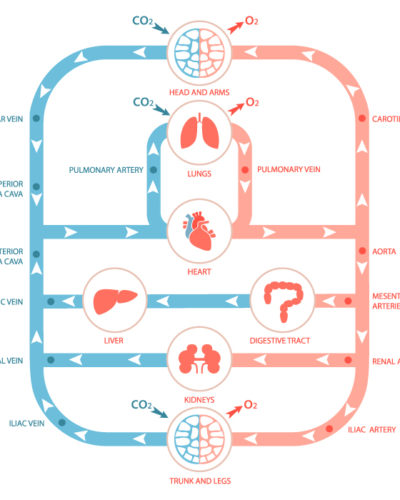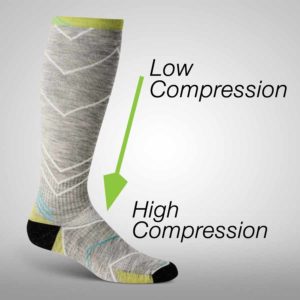Posted by slomotionshoes | 22 June, 2016
Benefits of Wearing Compression Socks
Compression socks are specially designed garments that may improve your endurance, performance, and recovery. Whether you walk, ski, bike, or spend a lot of time on your feet, you may benefit from utilizing compression socks.
Compression socks improve circulation in the legs and feet reducing fluid accumulation in the lower extremities. Improved circulation also enhances oxygen and nutrient delivery to the muscles and decreases the time needed for muscle recovery. Compressing your muscles may also provide structural support and reduce impact vibration. Additional support and reduced impact vibration may decrease your risk of injury and muscle fatigue with intense activities.
Your Circulatory System:

Your circulatory system includes your heart, arteries, and veins. The heart pumps blood through your arteries to the body and back to the heart through the veins. Arteries are made of natural elastic fibers that help to quickly “push” blood from the heart to your tissues. Veins are not as elastic as arteries, and rely on muscle compression to bring blood back to the heart. As your muscles contract they squeeze your veins “pushing” blood back to the heart.
How Compression Socks Work:
Socks assist with pushing blood back to the heart. Improved circulation helps maintain a proper fluid balance in your lower extremities and reduces leg and ankle swelling. Improved circulation also helps prevents the heavy achy pain many experience after being on their feet all day. Multiple studies indicate increased blood and lymph circulation decreases muscle soreness and perceived muscle fatigue.
Benefits of Using Compression Socks:
There are specific benefits to wearing compression socks. Research suggests there are clear benefits directly relate to improved circulation of blood and lymph from the feet, ankles, and lower legs. Additional fluid may accumulate in your legs after hard training sessions. Socks help circulate additional fluid and assist with recovery after a challenging session. Shorter recovery time is thought to be related to increased tissue oxygen saturation. Depending on the socks used, data indicates increased saturation ranges from 6-22%.
Compression socks may also help reduce symptoms of shin splints, muscle cramps, and Achilles tendonitis. Specifically, they may alleviate associated pain and discomfort you experience. Compression socks may also help prevent existing injuries from progressing.
- Reduced aching and feeling of “heaviness” in legs and feet.
- Improved circulation and reduced swelling in legs, ankles, feet.
- Prevention or reduced symptoms associated with varicose vessels.
- Preventing blood clots, especially after surgery or injury when less active.
- Improved circulation and prevention of foot ulcers for individuals with diabetes.
How Should Compression Socks Feel?:

Compression socks may be hard to put on, however, this is normal. They come in a variety of sizes and pressures measured in mmhg, so try on several pairs. It may take time for your legs to adjust to how they feel. When they are fitted appropriately, they should be snug but never painful. They should feel tighter around your ankles, and less so around your calves. Your feet and toes should should never feel numb, cold, or appear discolored.
Consider using pressure socks regardless of your daily activity. If you have any questions regarding the benefits of pressure socks, speak to your health care provider or trainer. Making compression stockings part of your daily routine can improve your lower extremity circulation and promote better health.
Sources:
Dearmont, T, Morizot L., Bouhaddi M. et al. Changes in Tissue Oxygen Saturation in Response to Different Calf Compression Sleeves. J. Sports Med. 2015. Article ID 857904, 5 pages.
Lucas-Cuevas AG, Priego-Quesada JI, Aparicio I et al. Effects of 3 Weeks Use of Compression Garments on Stride and Impact Shock during a Fatiguing Run. Int J. Sports Med. 2015; 36(10): 826-831.
Pascarella L, Shortell C. Chronic venous disorders: nonoperative treatment. In: Cronenwett JL, Johnston KW, eds. Rutherford’s Vascular Surgery. 8th ed. Philadelphia, PA: Elsevier Saunders; chap 56
Treseler C, Bixby WR, Nepocatych S. The effect of compression stockings on physiological and psychological responses following 5-KM performance in recreationally active females. J Strength Cond Res. 2015; PMID: 26670987.

